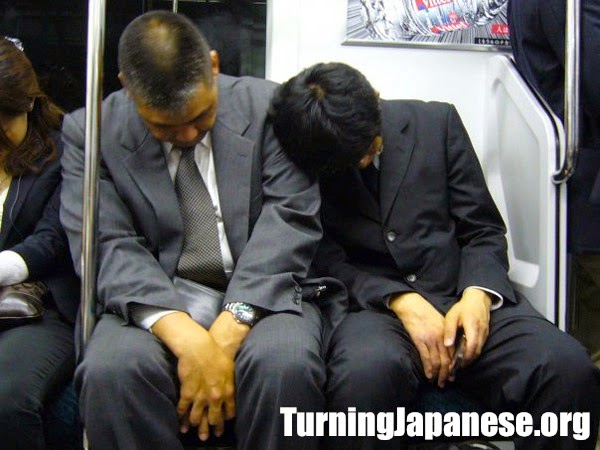Strange? Horrible? Funny? Interesting?
~~ ** ~~
There are many feelings associated with Japan.
Japan is considered not only as a country of many unusual customs, but it is also a global symbol of technological progress. Country of blooming cherry amazes foreigners linking modernity with attachment to tradition. Japan is definitely a country of controversy, and by any means I do not want deny it, even if I love and respect Japan.
Today I want to describe a way of Japanese unique MODERN life :).
~~ ** ~~
1. SHINKANSEN
~~ ** ~~
Here it is! The dream of every Pole that uses the services of PKP! Shinkansen- so called "bullet train" has an annual average of delay which is the only 36 seconds! Shinkansen has a top speed of up to 300 kilometers per hour normally, although the record established by the Japanese people is over 500 km / h. All tourists will be surprised by incredible cleanliness, silence and comfort prevailing in these trains. Although ticket prices are actually high, it is worth it, believe me! :) Unfortunately, even the beautiful sides of Japan have their own bitter aftertaste. In Japan, it is famous a case of suicide, after arriving late two minutes at the station. Japanese people can not imagine Japan without these trains, where many workers are at the mercy of Shinkansen trains going to work.
~~ ** ~~
In Japan workaholism is not a problem or disease, it is a lifestyle. Every Japanese person without exception is totally dedicated to work, which is for us- foreigners incomprehensible. This obsession forces Japanese people to work overtime hours, to show their respect to thier boss. It is also popular, sleeping or just pretending to doing it, in the presence of boss, which is considered as a sign of respect and dedication to the company. The company in the Japanese life becomes a replacement for family and is accompanied by a sad phenomenon of karoushi- death from overwork. Causes of death are exhaustion and stress, weakening heart function, or leading to karoushi jisastu- the suicide caused by overwork. Every year in Japan there occur from 15 to 30 thousand cases of karoushi. This situation is difficult to change because of the attitude of Japanese people, who often think that karoushi is nothing more than worthy death, there are even cases in which families of the dead are proud of this fact. The dedication for sake of others and economic growth than is beyond of human strength.
~~ ** ~~

3. RABU HOTERU VS. CAPSULE HOTEL
~~ ** ~~
Many Japanese people are working up to 16 hours per day, not returning home, but sleeping in hotels. In the bast case workers are spending with family weekends, but actually most of them see each other once a month or even less. This lifestyle has given the need to create a capsule hotel, another surprising invention of Japanese people. The capsule hotels are are cheap accommodation, limited to renting small "capsules" consisting only beds. One of capsule walls is made of glass, there are also separate floors for men and women and shared bathrooms.
And what it is this Rabu Hoteru? Japanese life is filled with work and is deprived of privacy. Small apartments in large cities, with thin walls are not favorable to a romantic atmosphere. So to satisfy the sexual needs of Japanese people, either with a hired woman for money, or with girlfriend, or wife they choose to go to love hotel. These unusual places aimed for love trysts often have a an odd design. Japanese people love using European architecture creating Rabu Hoteru, so if you are in Japan, and you see a medieval castle, or a baroque palace, watch where are you going! Also, the rooms are designed with a great imagination to meet erotic desires of Japanese people.
Here you have a couple examples :
See you next time! \(*3*)/




























